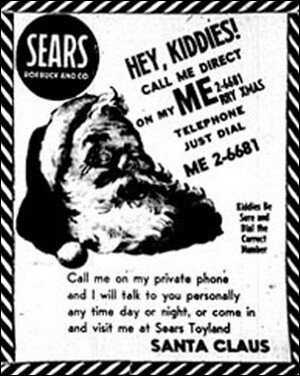
AN UNDISCLOSED LOCATION SIMILAR TO BUT MAYBE NOT THE SAME AS NORAD HEADQUARTERS IN COLORADO: Ho. Ho. Ho.
It may be hard to believe but the new F-35 sensors are so sensitive they can pick up Santa’s laughter from 1,300 miles away. It’s all part of NORAD’s new efforts to improve their ability to get inside Santa’s kill chain and thus guarantee neither Vladimir Putin’s grumpy fighter pilots nor the remarkably bolshie Chinese fighter pilots buffet his sleigh with their close passes over the South China Sea.
We can’t tell you how we know any of this, but trust us. It’s NOT Fake News because President Trump told us about it last week when he was briefing us about how invisible the F-35 fighter is.
 But the really exciting part of this story is that NORAD’s command structure is not nearly as rigid, supercilious or ineffective as some may have believed. How do we know this? Again, we can’t tell you but if you go to the NORAD Santa web page you’ll see the fabulous results of something that happened during some of the darkest days of the Cold War. (Younger people can look up the Cold War here.)
But the really exciting part of this story is that NORAD’s command structure is not nearly as rigid, supercilious or ineffective as some may have believed. How do we know this? Again, we can’t tell you but if you go to the NORAD Santa web page you’ll see the fabulous results of something that happened during some of the darkest days of the Cold War. (Younger people can look up the Cold War here.)
A Col. Harry Shoup, commander of what was then Continental Air Defense Command, picked up his ringing red phone, the super secret one that nobody had the phone number for. Except, they did.
Here’s how Shoup’s children Terri Van Keuren, 65, Rick Shoup, 59, and Pam Farrell, 70, told StoryCorps it all began:

This Sears ad (courtesy of NORAD) accidentally published the wrong phone number for Santa. StoryCorps’ interview of the siblings lays out what happened next.
“Terri remembers her dad had two phones on his desk, including a red one. ‘Only a four-star general at the Pentagon and my dad had the number,’ she says.
“‘This was the ’50s, this was the Cold War, and he would have been the first one to know if there was an attack on the United States,’ Rick says.
“The red phone rang one day in December 1955, and Shoup answered it, Pam says. “And then there was a small voice that just asked, ‘Is this Santa Claus?’ “
“His children remember Shoup as straight-laced and disciplined, and he was annoyed and upset by the call and thought it was a joke — but then, Terri says, the little voice started crying.
“‘And Dad realized that it wasn’t a joke,’ her sister says. “So he talked to him, ho-ho-ho’d and asked if he had been a good boy and, ‘May I talk to your mother?’ And the mother got on and said, ‘You haven’t seen the paper yet? There’s a phone number to call Santa. It’s in the Sears ad.’ Dad looked it up, and there it was, his red phone number. And they had children calling one after another, so he put a couple of airmen on the phones to act like Santa Claus.’
Like a nuclear weapon, the Santa tracking phenomenon just kept exploding.
A large glass board with the United States and Canada on it hung in Shoup’s HQ. That’s how they tracked incoming threats. One year, the airmen lost all discipline and started using official government resources to track Santa. Or at least it looked like they were. (We’re not sure if the Inspector General’s investigation into this has been declassified yet or not. We’ll check, maybe.)
The story goes on: “‘And Christmas Eve of 1955, when Dad walked in, there was a drawing of a sleigh with eight reindeer coming over the North Pole,’ Rick (Shoup) says.
“‘Dad said, ‘What is that?’ They say, ‘Colonel, we’re sorry. We were just making a joke. Do you want us to take that down?’ Dad looked at it for a while, and next thing you know, Dad had called the radio station and had said, ‘This is the commander at the Combat Alert Center, and we have an unidentified flying object. Why, it looks like a sleigh.’
Today, NORAD deploys bazillions of F-35s and F-16s and uses X-band and Z-band and other really really secret radars to track the magical creature known in America as Santa Claus.
And that’s the way it is. Probably.
God Bless StoryCorps, NPR, the Shoup family, everyone at NORAD and Strategic Command and, well, gosh: God bless us, every one.
MERRY Christmas from Colin Clark, Sydney Freedberg, Hsiaolei Miller, John Lerner and Peter Hobbs and the rest of the crew who make this publication happen!!!
StoryCorps is a national nonprofit that gives people the chance to interview friends and loved ones about their lives. These conversations are archived at the American Folklife Center at the Library of Congress, allowing participants to leave a legacy for future generations. Learn more, including how to interview someone in your life, at StoryCorps.org.
Lockheed Martin projects potential $1 billion loss on classified program
Lockheed CFO Jay Malave said the company currently expects the program to become profitable on an annual basis around the 2028 timeframe.


























